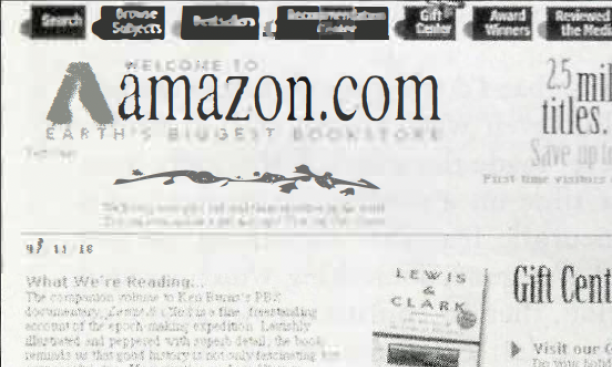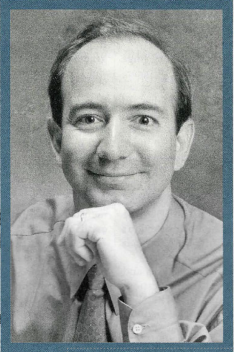
Earth’s Biggest Bookstore – Jeff Bezos ’86’s Amazon.com sells 3 million titles on the Web.
Jeff Bezos ’86 has built one of the Internet’s biggest enterprises around a simple premise: That a very old communications technology – the book is uniquely well-suited to commerce via a very new one. “Three million different book titles exist in print at any given time,” says Bezos, who left a Wall Street career to launch Amazon.com in 1994. “For sheer volume of different products, the only industry anywhere close to books is music, and that has only a tenth as many unique titles. With the Internet, we can have infinite shelf space. It’s possible to build a store online that could not exist any other way."Billed in its ubiquitous online advertisements as "Earth's Biggest Bookstore," the Seattle-based Amazon.com is the No. 1 retailer on the World Wide Web, with $81.7 million in sales through the first three quarters of 1997. Overall, Amazon.com is one of the 30 most popular Websites on the Internet, according to PC Meter, the Nielsen ratings of the Web.
Amazon.com customers can't thumb through pages or sip cappuccino the way they might at a conventional bookstore. But Bezos uses computers to perform customer-pleasing tricks that would be impossible off-line. One is the price discount. Unburdened by the cost of expensive real estate, Amazon.com offers discounts of as much as 40 percent; even with the cost of postage, customers find it's usually cheaper to buy a book through Amazon.com.
In addition, Amazon.com has developed a form of artificial intelligence software that creates a customized experience for each customer. Every time registered users return to the site, they're greeted by name and a list of recommendations based on what they've purchased in the past. The more someone buys, the more Amazon.com's computers "learn" the person's reading personality. "The hardest thing about buying a book is figuring out which book to buy," Bezos says. "But with the resources we make available, it's not such a needle-in-a-haystack situation."
Users can also read reviews and author interviews and search for titles by writer, subject, or ISBN number. If they're gift-shopping, they can punch in the recipient's age, sex, and chief interests and get back Amazon.com's recommendations in a matter of seconds. To complete the purchase, users fill out an electronic form and give a credit card number. (People concerned about credit-card security-they needn't be, Bezos stresses-can call a toll-free number instead.)
Unless it's a hard-to-find title, the book usually arrives two days later from the Amazon.com warehouse in Seattle or the recently opened distribution center in Delaware. To supply books not in stock, Bezos relies on a network of book distributors.
Though free from the expense of maintaining and staffing a chain of stores, Bezos's operation is hardly low-maintenance. The company has more than 600 employees and is investing heavily in advertising and promotion as well as technology. Thus, Amazon.com has yet to show a profit despite an explosion in customers in 1997. Investors, nevertheless, have been eager to get a piece of the action. Amazon.com raised more than $50 million with its initial public stock offering last year, wowing Wall Street and exceeding its target by 80 percent.
Despite its soaring popularity, Bezos doesn't see his virtual bookstore as a threat to the real-world retailers. "I still buy half of my books from regular bookstores," Bezos says. "It's a different experience. I think both methods are going to continue to do extremely well."
This piece was published in the April 19, 2000 issue.

